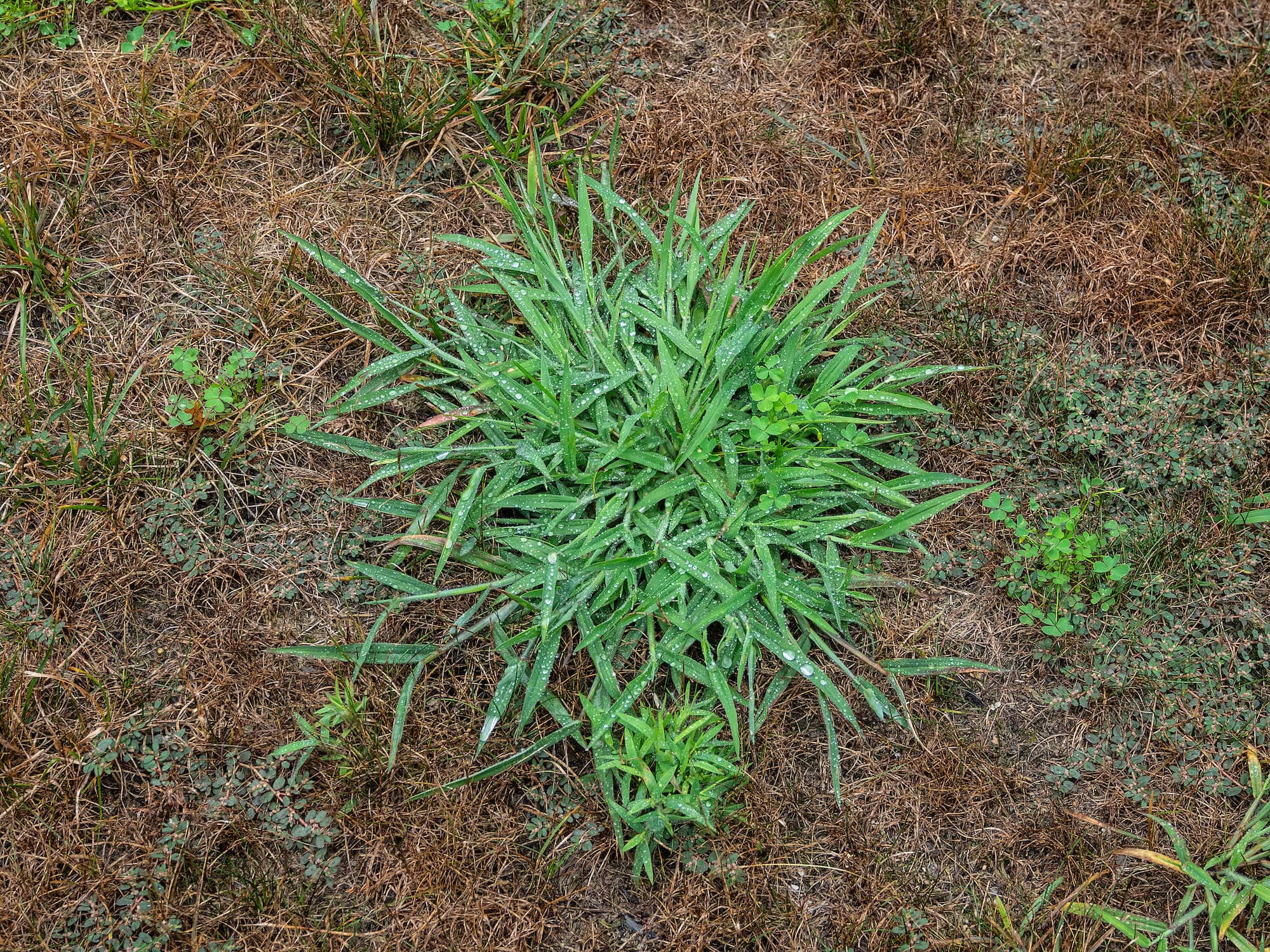How to Get Rid of Crabgrass
Crabgrass can ruin the look of your lawn, drive you mad if it becomes well-established, and take over your garden or flowerbeds if left untreated.
While crabgrass itself is one of the easiest lawn issues to identify, it can be tricky to remove crabgrass and ensure it doesn’t find its way back into your lawn. There are multiple methods that can be used to remove crabgrass — both chemical and manual. In this guide, we’ll cover several tips and tricks to help you get rid of crabgrass as best as possible.

What is crabgrass?
Crabgrass is a type of weed that can be found in yards and gardens. It’s a fast-growing grassy weed that spreads quickly, crowding out other plants. Crabgrass typically has a reddish hue and will often grow in clumps.
Crabgrass will typically grow back very quickly, while other types of weeds will take longer to re-grow. It is an invasive plant that can easily take over a yard, leaving it looking brown and dead.
Why should you get rid of crabgrass?
Crabgrass can be unsightly and is often considered a weed. It can spread quickly, crowding out other plants in your yard or garden. It also takes nutrients from the soil that are meant for other plants to use — killing off those plants if left untreated. Plus, crabgrass spreads easily through seeds that eventually fall into your lawn or garden bed and grow new crabgrass plants.
How does it spread?
Crabgrass doesn’t need much water to thrive; however, if you do water heavily on days without rain or drought conditions last long enough, then these weeds will flourish even more as they won’t have competition from grasses competing for nutrients (the biggest reason why they don’t die).
How to get rid of crabgrass:
Manual removal:
The easiest way to remove crabgrass is by hand. Simply pull the weeds from the ground and discard them. Be sure to remove all the roots, or the weed will just grow back.
Chemical removal:
You can use herbicides to kill crabgrass, and many of these are available at your local hardware store.
Various herbicides will work, but it’s important that the herbicide is “pre-emergent” — this means that it targets weeds before they start growing in your lawn or garden. If you use a post-emergent herbicide on crabgrass after it has started growing, the weed may not die completely. And if any remaining roots survive treatment, then another crop of weeds will quickly emerge.
You can also use weed killers that contain glyphosate if all else fails and the weed has become too large or widespread for manual removal alone. If possible, try not to use chemical control options on seeds or young plants because they will likely survive treatment and produce more seeds at maturity — making things worse instead of better.
Gardening vinegar:
Gardening vinegar is a natural weed killer that can be used on crabgrass. This method requires you to use vinegar at full strength, so make sure the area around your yard is clear of anything else before using gardening vinegar as an herbicide for weeds like crabgrass in order to avoid killing any other plants or grasses nearby.
Tips for getting rid of crabgrass
It is easy to get rid of crabgrass if you follow these simple steps:
- Pull out existing crabgrass from your lawn with a rake
- Crabgrass is easy to pull up when the soil is moist or after a light rainstorm. This will prevent the crabgrass from producing seeds and spreading throughout your yard.
- Apply a pre-emergent herbicide before the crabgrass starts growing. A pre-emergent herbicide prevents crabgrass seeds from germinating into plants. Apply the herbicide while the temperature is still cool and before spring begins. This will kill off any remaining crabgrass seeds left on your lawn.
- Apply a post-emergent herbicide to kill off existing crabgrass plants. A post-emergent herbicide will kill an existing plant when applied directly to its leaves. Use this type of herbicide once the crabgrass has started growing in your yard.
- If you have a large area of crabgrass to remove, use glyphosate weed killer. This type of weed killer will kill most plants when applied directly to them.
- Use gardening vinegar as a last resort if the previous methods haven’t worked. Be sure to avoid spraying it on any other plants or grasses nearby, and only use full-strength vinegar for the best results.
- Maintain your lawn by keeping it well-watered and mowed regularly. Crabgrass cannot thrive in an environment where there is plenty of moisture and healthy grass competition.
- Regularly removing weeds like crabgrass from your yard can seem daunting, but following these simple steps can make the process much easier. By using pre-emergent and post-emergent herbicides, you can prevent crabgrass from germinating or spreading in your yard.
How to prevent crabgrass from growing in your yard
Preventative methods are the best way to keep crabgrass out of your yard. It is much easier not to let crabgrass take hold than it is to try to get rid of it once it has established itself in your lawn.
Mow at the proper height for your grass type
Crabgrass loves short grass because there is plenty of sunlight for the seeds to germinate. Keep your lawn at least 3 inches tall throughout the growing season to help prevent crabgrass from taking over. This will also help keep your lawn cooler during warmer weather.
Water correctly
Crabgrass thrives in dry soil where other grasses struggle to survive. If you notice crabgrass taking over areas of your lawn, you may be overwatering those sections by keeping them too moist for too long. Watering in the early morning can help reduce the chance that you will be watering your lawn during the hottest part of the day.
Apply a pre-emergent herbicide
If you have already had problems with crabgrass in the past, applying a pre-emergent herbicide in late winter or early spring can help to prevent new seeds from germinating. Choose a herbicide that is labeled for use against crabgrass and follow all directions carefully.
Replace any turf grass with perennial ground cover
If you are not able to keep your lawn at the correct height or if it is constantly wet, replacing some or all of your turfgrass with perennial ground cover can help reduce the amount of space available for crabgrass to grow. Ground covers such as pachysandra, vinca, and ajuga allow rainwater to penetrate into the soil instead of running off. They also eliminate large areas that can easily become overrun with crabgrass.
Plant grasses that are competitive with crabgrass
Some grass varieties such as tall fescue, creeping red fescue, and fine fescue do not grow well in hot weather or in thick patches where there is little air circulation. Crabgrass will have an easier time taking hold when these types of turfgrass are present, so replacing them with Kentucky bluegrass or perennial ryegrass is recommended. These two types of lawn grass create a dense canopy that shade out any seeds trying to germinate underneath the existing turf.
Use a glyphosate herbicide
If you have tried all the above methods and crabgrass is still taking over your lawn, using a glyphosate herbicide may be your last resort. This type of herbicide kills any plant that it comes into contact with, so it should only be used as a last resort when other methods have failed.
Make sure to read the product label carefully and follow all directions exactly. You will also need to take into account any plants that you do not want to kill before using this type of herbicide. Crabgrass can be stubborn, but with some patience and perseverance, you can get rid of it for good.
Frequently Asked Questions
Why do I have so much crabgrass?
There can be a number of reasons why you are seeing more crabgrass on your lawn. One possibility is that the conditions are right for it to grow, such as short grass, dry soil, and plenty of sunlight. Another reason could be that you are not following proper lawn maintenance practices, such as mowing at the correct height or watering correctly. If all else fails, you may need to apply a pre-emergent herbicide to help prevent new crabgrass seeds from germinating.
Can I plant grass seed over crabgrass?
It is possible to plant grass seed over crabgrass, but it will be much more difficult for the new grass to take hold. You may need to use a glyphosate herbicide to kill off any existing crabgrass before planting a new grass seed.
What kills crabgrass and not the lawn?
There are many herbicides that are designed to kill crabgrass without harming your turfgrass. These types of products usually contain an active ingredient such as quinclorac or dithiopyr and can be found at most garden centers and home improvement stores.
Conclusion
As much as a nuisance crabgrass is, there are ways to get rid of it. Because of the variety of these methods, it all depends on your preference and what you are more comfortable with.
While getting rid of crabgrass will take some extra effort on your part, the end result is well worth it. You’ll no longer have to worry about crabgrass taking over your lawn, leeching out the nutrients, and ruining its appearance in the process.







